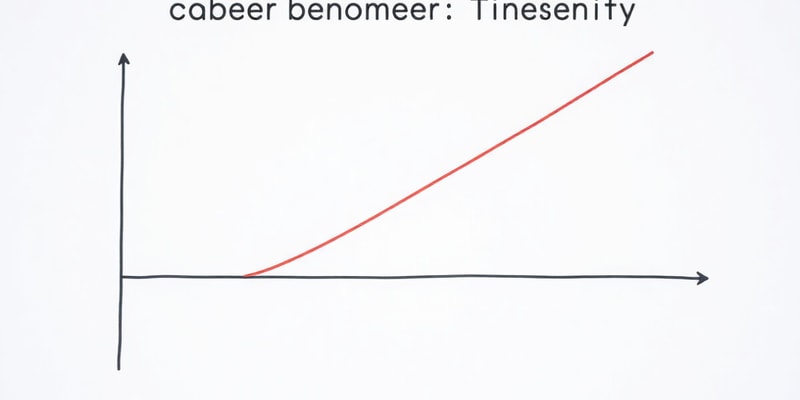Podcast
Questions and Answers
What is the concept that explains why each additional unit of a good adds less to utility than the previous unit?
How can consumer preferences among consumption bundles be represented?
What does a downward sloping indifference curve indicate about consumer preferences?
What is indicated by the Marginal Rate of Substitution on an indifference curve?
Signup and view all the answers
What occurs to the budget constraint when there is a change in income?
Signup and view all the answers
Which characteristic defines perfect substitutes in terms of indifference curves?
Signup and view all the answers
What effect does an increase in the price of one good have on the budget constraint?
Signup and view all the answers
What is defined as the disutility in consumer theory?
Signup and view all the answers
Which of the following best describes the characteristics of a budget constraint?
Signup and view all the answers
How is marginal utility calculated?
Signup and view all the answers
Study Notes
Consumer Theory Assumptions
- People are rational; they always choose the best option.
- All goods have utility (value/satisfaction from consumption).
- Marginal utility is the change in utility from consuming one additional unit of a good.
- There is no saving; consumers spend all income.
- Marginal utility diminishes over time.
- Diminishing marginal utility: Each additional unit provides less utility than the previous unit.
Marginal Utility Calculation
- To find marginal utility, divide total utility by the quantity of goods.
- Negative marginal utility indicates disutility.
Consumer Preferences
- Consumer preferences are shown through indifference curves.
- Indifference curves show consumption bundles that offer the same level of satisfaction.
- Indifference curves are always downward sloping and convex to the origin (due to diminishing marginal utility).
- Indifference curves never intersect.
Budget Constraints
- Budget constraints show the limit on consumption bundles a consumer can afford.
- This often leads people to consume less than they desire.
- The slope of the budget constraint line represents the relative price of two goods.
- A change in income shifts the budget constraint curve.
- A change in the price of one good causes the budget constraint curve to pivot.
Utility Maximization
- Consumers aim to maximize utility per euro spent.
- Compare the marginal utility and the price of goods to adjust spending accordingly.
- Optimal consumption occurs where the marginal utility per euro spent is equal for all goods, subject to budget constraints.
Studying That Suits You
Use AI to generate personalized quizzes and flashcards to suit your learning preferences.
Related Documents
Description
Explore the essential principles of consumer theory, including rational choices, marginal utility, and consumer preferences. This quiz will test your understanding of indifference curves and budget constraints, key elements in the field of economics. Perfect for students looking to grasp the foundations of consumer behavior!




